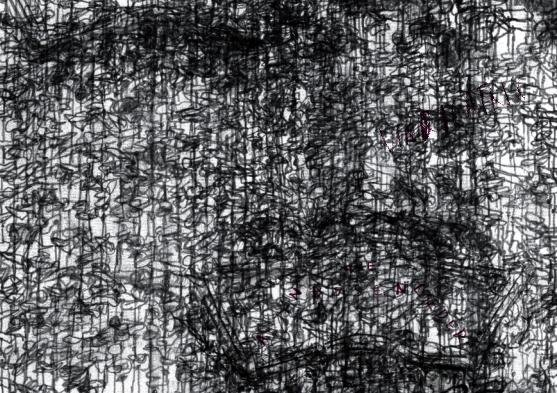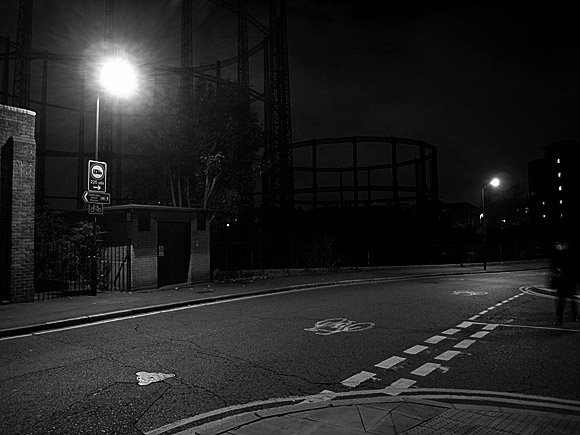This is my paper presented yesterday at the Hardcore Continuum Event at UEL. Big thanks to Jeremy Gilbert and Steve Goodman for inviting me, to the other panelists, and to the audience who generally asked decent questions...
The most contentious claim Simon Reynolds makes regarding the Hardcore Continuum is that it is not simply a theory, a model, but rather that it is real. On Reynolds’ account the Continuum was not invented by him but rather he discovered it as an already existing thing, and merely gave it a name and described the kind of processes of which it consists. The reason why Reynolds is drawn towards defining the continuum as a discrete object is fairly obvious, since to do so is to make it cohere across time in the same way as hip hop or jazz or rock, and in so doing claim a similar space of significance for it. This certainly accords with Reynolds’ talk about a kind of musical patriotism: for him, the continuum is the greatest popular music invention to emerge from the UK, and a coherent name allows its mercurial processes, its constantly shifting genre structure (from Hardcore to jungle to 2-step garage to grime to dubstep) to be conceived as a single evolving art-form. In this sense it is hoped that its canonical and culturally significant role can be firmly asserted. Whilst few would dispute that there is certainly a high degree of interconnectedness between these scenes, the issue of the continuum as real-in-itself presents something of a conundrum. Reynolds’ claims that the continuum is an “empirically verifiable (and abundantly verified) thing-in-the-world” is usually backed up by vague accounts of demographics and technology, although both of these have changed significantly across the course of the purported continuum. A more rigorous musicological analysis has so far been absent, but might seek to demonstrate the connections between sub-genres on the basis of their percussive forms, rhythmical patterns, chordal and melodic devices, the particular textures used (with attention being paid to precise methods of generation, the envelopes, filters and tone generators used to create the sounds). This data could presumably be mathematised and statistically plotted, to be able to chart at the material level of the music itself any coherent patterns. But short of such genuinely realist empirical verification, we are left with a theory which is too open-ended and insufficiently tight in terms of what it includes and excludes. This leaves it liable to being used in a prescriptive fashion, since if there are no hard and fast rules as to what is in or out, and no attempts to demonstrate empirically how we might judge this, the temptation towards personal prejudice (to claim for example that “Grime isn’t in, its too aggressive”, or “Dubstep isn’t in, its too languorous”) remains significant. Whilst this is a problem with most genres too, it becomes particularly egregious when projected onto the scale of the continuum. It also leaves open why we ought to begin with Hardcore, when if we want to talk about Grime, Dubstep, Bassline, Funky, and Wonky it is much more coherent to talk about them in relation to their immediate predecessor sound, UK Garage.
There is a temptation at this point to throw our arms up in despair, and point towards the apparent failure of the Hardcore Continuum to be anything more than a convenient shorthand as a demonstration of the inappropriateness of any and all theorisation of Music or pop culture. I think this is a mistake. Whilst there is certainly a need for a realist theory of dance music, which would be able to precisely map mathematisable musical qualities, there is also another role for theory entirely- one which was described by the Cybernetic Cultural Research Unit as ‘hyperstitional’- a form of fiction which engenders its own realities, or which can intensify our experience of the real. Another way of thinking about this is through what has been termed ‘immaterial labour’ - types of work which produce value which are not directly related to production as we might traditionally conceive it. In the case of dance music, of course there are the producers and DJs who deal directly with the creation and dissemination of the music, but there are also the dancers, the consumers, the theorists and the journalists, each of whom has a significant role in creating the context in which certain musical forms are selected over others. As has been well noted, in the case of the dancer-consumer, it is only with their positive or negative feedback relationship to the DJs and producers that enables certain percussive or affective tropes to emerge as dominant. But the context in which the DJ-Producer-Dancer relationship is forged is one which, to some extent, created by promoters, by music journalists, and by theorists. And it is only when you put together these three sides of the equation- producers, consumers, and media that the processes of dance music can be properly thought about. Because from the perspective of immaterial labour, each of these three groups is in a certain sense actually a producer, though some produce in a less tangible or immediately obvious way than others. Each is creative, and it is not really the case that we can separate out DJs or the actual creators of the music of as a special category to be given priority over the others, since their production is meaningless outside of the broader context, and it is indeed the context itself which the media, in this case music journalists and theorists, produce. Moreover I do not think that it is possible to get away from theorising- we can do so in a more or less academic fashion, certainly, but contra-Mark Fisher, I think we must consider that even the simplest of reviews contain theoretical positions, of a sort. Even the notion that this debate which we are having now is a kind of over-abstraction and that we should all head down to Forward and actually get raving, is itself a theoretical position!
The Hardcore Continuum is real, but only as a theory. In other words the theory exists and has certain effects- how it influences other forms of production, how it adds to our own experiences of music. It is certainly related to a reality external to itself (a set of musics, clubs, people) but its role is not passive, but active. The act of naming is not a naturalistic or scientific act of description, but a creative act itself, an invention, not a discovery. It puts the set of musics it collects under its name into a particular configuration, and if we buy into the theory, alters our way of perceiving them. We can indeed still take umbrage at what the Hardcore Continuum does, since though it acclaims innovation on the one hand, perversely its canonisation of the past may well act to inhibit future developments. By codifying the history of these musics and attempting to think them within a grandiose system which now stretches back at least 15 years, there is a kind of drag-effect upon the abilities of future artists (and theorists no doubt) to continue the very arrow of futurism it claims to represent. If the Continuum theory has an effect, it might not be entirely positive! But naming, whether it is of the Hardcore Continuum, of a genre or of a single track, certainly creates a powerful context which shifts the nature of the thing being described.
We might consider that in the formative stage of generic development in dance music, DJs play records in relation to a certain defined body of dancers to select certain tropes over others, largely to please (but sometimes to challenge) the particular tastes of the crowd. In the early days of hip hop, for example, before the genre existed in a pre-defined way, DJs would select music from a variety of genres, playing the tastiest breaks from rock and roll, soul, funk, disco, and even Kraftwerk. This serves to project a kind of constellation of points, between which a genre coalesces. Later dedicated producers come to write music to specifically occupy this defined space, to join the dots between the early cross-genre records. What naming does in all this is to crystallise this loose constellation of sounds, to literally define and enact the genre, to mark the point when it becomes something more than merely an assemblage of pre-existing sounds. In some ways, naming is a gamble or a wager, a bet on the fact that this rough configuration will come to be a genre. And not all genre name’s stick (if we remember the early days of what came to be called ‘Grime’, we might have equally ended up with the somewhat less evocative ‘sub-low’). Naming itself is thematised in a track like Wiley’s “Wot U Call it?”, and the moment when a body of music seemingly demands a defined descriptive label can be thought of as the “Wot U Call It” moment. It is also no coincidence that the time shortly before and after the “Wot u call it moment” is often the one which produces the most fascinating and original music within the genre.
I now want to talk about Wonky, as a paradigmatic example of naming as a creative process of intervention. It was named by Martin Clark aka Blackdown in his April 2008 Pitchfork column, and like Funky, is an adjective appropriated to serve something close to the role of a noun. In his original piece Martin defines wonky as… “A theme not a genre” and a “crossing”. In these senses Wonky is postulated as something more than an adjective, a feel, a vague descriptor, but (unlike funky) something looser than a solid or coherently demarcated genre-noun. This description is both tentative and audacious, necessarily tentative since it lashes together a seemingly disparate group of artists through the notion of a kind of common “spirit” of wonkification operating in all of them, but equally audacious since it refuses the easy option of a singular, fixed generic label. Wonky is not a box, but rather some kind of aesthetic which operates between boxes.
The key word in Martin Clark’s initial definition is very much “crossing”- and though often crossing between genres seems to give rise to a kind of bland eclecticism, a postmodern homogenisation, in this instance the nature of “crossing” seems to have a markedly different quality. Wonky is a kind of process, rather than a fixed endpoint, a liquidation rather than a fusion, a process which occurs to pre-existing genres rather than being a genre itself. It is for this reason that I like to consider how wonky operates through use of the idea of the “transversal”. A transversal is a line of connection operating between otherwise disconnected regions, transforming them and breaking down pre-existing structures, a kind of trans-generic mutational agent. I think this can be reasonably applied to wonky at present, since what it opens up is lines of contact between genres as disparate as Dubstep, post-Dilla Hip hop, Crunk, Grime, Rave, Electro, and IDM. More than simply a new passageway for musical ideas to pass through, wonky-as-process seems to be able to translate ideas, like a sort of synaesthesic wormhole, afflicting any element of a track- sometimes textural, sometimes percussive, sometimes pitch, a fluid shifting of the idea of wonky between these different elements and registers. For example, the “wonkiness” of Flying Lotus comes predominantly through use of non-quantised drum patterns, whereas for Joker it is expressed in maniacally pitch bent and modulated synths. And beyond its lurid synthetics and lopsided mutant free-funk, Wonky is intriguing as perhaps the first sound to properly embody, in a very literal sense, the kind of media-scape which has been wrought by the permutations of internet culture. The lines of communication which the term represents are genuinely transnational, and if Reynolds’ thesis encounters trouble once we reach Grime (in the cult of the MC) or Dubstep (the torpor of the percussion) then it reaches total crisis point with Wonky. Not only is it no longer a “London ‘thing”, its not even a “UK ‘thing” anymore, and yet it clearly originates at least in part within what Simon would want to call the Continuum.
The question must be raised however, as to whether wonky itself is “real”? Is it not simply a journalistic fabrication? What I would argue is that it is not so much real in the sense of a pre-existing scene which demanded a descriptive name to be given to it, but as a kind of trans-generic zeitgeist aesthetic which was crystallised in Martin Clark’s intervention. To reverse Reynolds’ formulation, this is inventive rather than simply a discovery, since though a name must have something concrete to latch onto, its reality is effectuated in what happens to that reality after it has been named, which is never a neutral process. In the case of wonky, new lines of communication have been opened up between a fairly diverse set of producers, who have now begun to remix each other’s work. Equally, promoters have a theme upon which to construct nights around, meaning that increasingly we might find wonky DJs, sometimes operating out of very different traditions on the same bills (Flying Lotus and Zomby for example). By naming wonky as a transversal form (as a line of connection transversal to genre) it is as flexible as possible, allowing the maximum potential for the unexpected and for the non-genre to be a fertile ground for new music to emerge from. If the most fecund period for a genre is often that immediately preceding and following the “Wot U Call it” moment, it is because producers are still working out the kinds of conventions which will come to define the genre, and dancers are trying to work out how to move their bodies to the new sounds and rhythms, and journalists and theorists are scratching their heads trying to come up with original ways to think this new form. Dubstep became mired in a certain set of characteristics (turgid half-step drums, unimaginative wobble bass and dodgy plastic Rasta samples) because it became too rapidly codified, in spite of the seemingly highly open-ended nature of the form (138bpm with heavy bass) and the strong awareness of the need to avoid the vertiginous collapse which afflicted Jungle in 1997. And of course there remains a danger that wonky may well solidify into “just another genre”. It is still eminently possible that a later generation of producers will emerge who treat artists like Flylo, Rustie, and Joker as a pre-generic constellation of points, and construct a static genre in the space between them, a tired collection of dried-up genre signifiers. Seen in this context, the naming of Wonky as a non-genre, as a process of disruption and liquidation, can be identified as an attempt to disturb the usual processes of genre sedimentation so as to maintain the “Wot U Call It” moment of maximum confusion and creativity even whilst simultaneously producing a term with which to describe it.
Note: Martin Clark and I were talking after the event about who coined the phrase "the wot u call it moment"-- glancing at Dissensus, it originates with Nomos AKA Paul Autonomic of
Deeptime.






